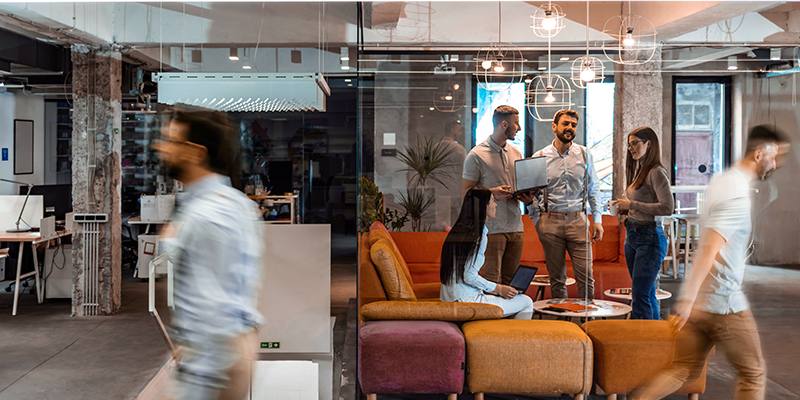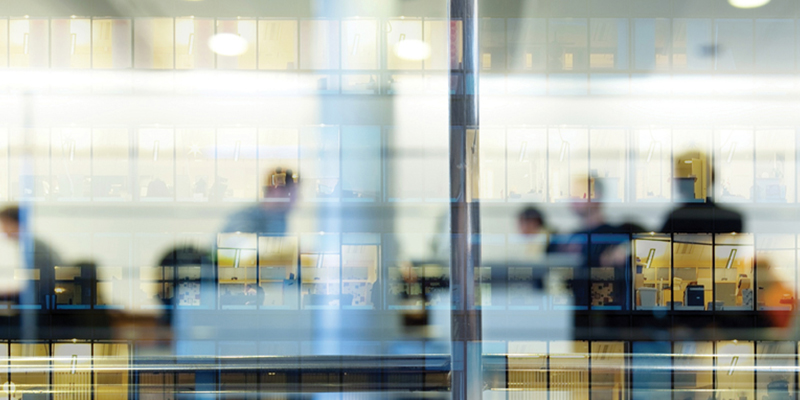How can organizations best position themselves to effectively respond to behavioral shifts and new generational needs? What changes to the workplace can create a culture of creativity and success?
In a recent NAIOP webinar, Mark Bryan, Certified Futurist and director of innovation and research, M+A Architects, addressed these questions, sharing some of the generational shifts his company has observed in the workforce and their potential impact on the built environment.
Bryan also identified four principles for the future workplace, based on those shifts and the new needs of the post-pandemic workforce.
Living Fluidity
Agility and choice have become the norm. Employees will expect offices in the future to be more accommodating. The 9-to-5 schedule is gone, replaced by 24/7 scheduled access. Individual work styles will hyper-personalize the department’s spaces to allow for a team-optimal work style. Workdays become more fluid based on need, but also more exciting as new space types allow for “choose your own adventure” mode. Accommodating also allows for integrated accessible spaces that address physical and mental disabilities or cognitive issues so that spaces are welcoming for all.
How to start today: Restructure the office to be 24/7, never to go dark, and flexible to suit individual work and personal needs.
Liminal Identity
With more flexible/agile/choice-based working, our liminal/in-between spaces become much more of a priority. The need for mental resets will require ladder spaces that provide a break-to-reset moment. Liminal spaces will become the way to allow for continued renewal of joy as they make the workplace constantly feel new. These in-between spaces allow for water cooler banter, and for employees to bring their personal artifacts into work when they have no fixed workspace. DEI can be addressed through these areas if employees feel seen and heard through issue boards and spaces.
How to start today: Rethink corridor and lobby spaces as transition spaces and places for onboarding/mental breaks. Develop amenities that are attractive to remote talent.
Coach Makers and Upskilling
Creativity is the new productivity. Managing future employees is done by leaders who act more like a coach than a boss. New training and maker spaces will allow for employees to develop creative and design-thinking skills. Upskilling allows for better development not only in the workplace but for personal skills as well. Onboarding new employees can be done at destination spots or in upskilling centers/zones. The new developed workforce will be measured by what they can create in a day versus task completion.
How to start today: Begin to understand what skills your employees want to develop personally and professionally. Partner with or develop your own upskilling or reskilling center to attract, engage and retain employees.
Cultural Magnets
Culture will become the face of your company, the spaces your clients will want, and the buildings they occupy. As many leaders are struggling to solve the WFH/remote work/flexible schedule equation, they will be working to identify what their future culture should look like and use that definition to realign their space. These spaces will be open to more than just their employees, grounding them in the community. For success, many companies will create hub-and-spoke offices, dispersing the central core and looking to establish remote cultural centers to keep employees engaged.
How to start today: Offer a cultural assessment to your clients to engage them in in ways to understand their current culture, what needs to be fixed, and ways to transform culture into space to bring employees back and together.
Bryan concluded that with the widespread shifting of priorities from “working to live” to “working for life,” a lot of employees are looking to align their personal values to match their company’s.
“More often, the workplace is becoming the face of the company.”














